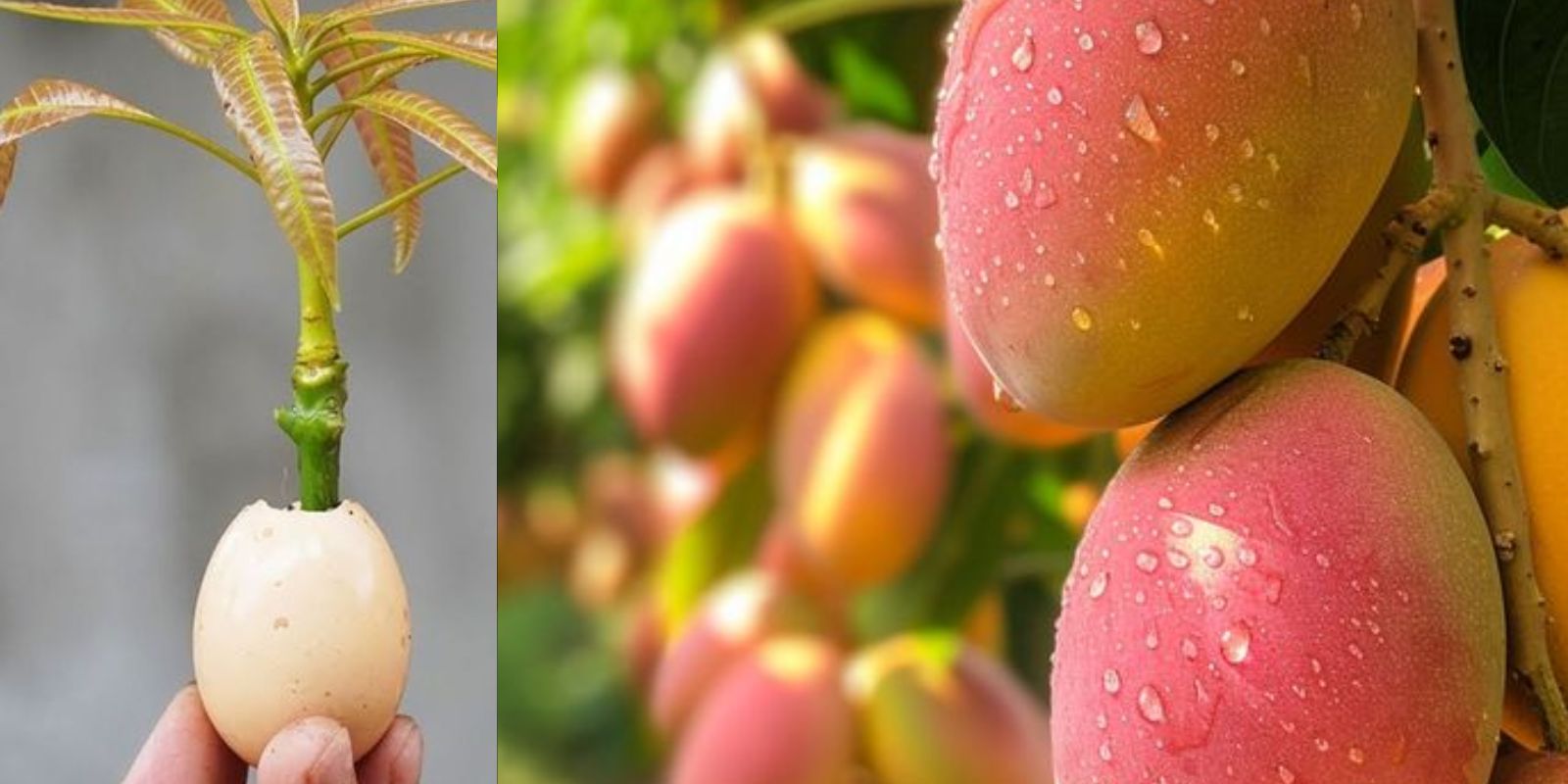Introduction
Mangoes, known for their sweet and juicy flavor, are a popular fruit worldwide. Traditionally grown from seeds, mango trees can also be propagated from cuttings. This method is particularly beneficial as it allows gardeners to reproduce specific varieties with desirable traits. Using egg gel in this process is a new and innovative technique that enhances the rooting and growth of the cuttings. This article will guide you through the steps of growing a mango tree from cuttings using egg gel, ensuring you achieve successful results.
Why Use Cuttings?
Growing mango trees from cuttings has several advantages:
- Clonal Propagation: Cuttings produce clones of the parent plant, ensuring the new trees have the same desirable characteristics.
- Faster Fruiting: Trees grown from cuttings often fruit earlier than those grown from seeds.
- Disease Resistance: Using cuttings from a healthy parent tree can help propagate disease-resistant trees.
Why Egg Gel?
Egg gel is used in this technique due to its nutrient-rich properties and its ability to retain moisture. The proteins and nutrients in egg white provide an excellent medium for the cuttings to root and grow. Additionally, the gel-like consistency helps maintain a humid environment around the cutting, which is crucial for successful rooting.
Steps to Grow Mango Trees from Cuttings Using Egg Gel
1. Preparing the Cuttings
Select Healthy Branches
Choose healthy, mature branches from a disease-free mango tree. The branches should be semi-hardwood, meaning they are not too young and green, nor too old and woody.
Cut the Branches
Using sharp, clean pruning shears, cut 6-8 inch sections from the tips of the selected branches. Make sure each cutting has at least a few leaf nodes, as these are the points where roots are most likely to develop.
Remove Lower Leaves
Remove the leaves from the lower half of the cutting, leaving a few leaves at the top. This helps reduce water loss and directs the plant’s energy toward root development.
2. Preparing the Egg Gel
Ingredients
- Egg whites (from 1-2 eggs)
- Water
Create the Gel
Whisk the egg whites with a small amount of water until you achieve a gel-like consistency. The mixture should be thick enough to coat the cuttings without dripping off. This egg gel will provide essential nutrients and maintain moisture around the cuttings.
3. Dipping the Cuttings
Coat the Cuttings
Dip the cut end of each cutting into the egg gel, ensuring it is well-coated. The gel will act as a nutrient-rich medium that supports root development.
4. Planting the Cuttings
Prepare the Potting Mix
Use a well-draining rooting mix, such as a combination of peat moss, perlite, and sand. This ensures good aeration and prevents waterlogging, which can cause the cuttings to rot.
Insert the Cuttings
Insert the gel-coated cuttings into the potting mix, burying them about 1-2 inches deep. Space the cuttings apart to allow for adequate airflow and to prevent competition for resources.
Water Lightly
Water the cuttings lightly to settle the soil around them. Ensure the pot has drainage holes to prevent excess water accumulation.
5. Creating a Humid Environment
Cover with Plastic
Cover the pot with a clear plastic bag or a plastic dome to create a humid environment. This helps maintain moisture levels and reduces water loss from the cuttings.
Placement
Place the pot in a warm, bright location, but out of direct sunlight. A temperature range of 70-80°F (21-27°C) is ideal for rooting. Direct sunlight can overheat the cuttings and cause them to dry out.
6. Caring for the Cuttings
Maintain Moisture
Keep the soil consistently moist but not waterlogged. Check the cuttings regularly and mist them if necessary to maintain humidity. Avoid letting the soil dry out completely, as this can hinder root development.
Monitor Root Development
Roots typically develop within 6-8 weeks, although this can vary depending on environmental conditions. You can check for root development by gently tugging on the cuttings. If you feel resistance, it indicates that roots are forming. Alternatively, carefully remove a cutting to check for root growth.
7. Transplanting the Rooted Cuttings
Prepare for Transplanting
Once the cuttings have developed a healthy root system, they are ready for transplanting. Choose a larger pot or prepare a spot in your garden with well-draining soil.
Transplant the Cuttings
Gently remove the cuttings from their pot, being careful not to disturb the roots too much. Plant them at the same depth they were growing in their pots. Water them thoroughly after planting to help settle the soil around the roots.
Provide Post-Transplant Care
Provide the newly transplanted mango plants with regular care. Keep the soil consistently moist, but avoid overwatering. Fertilize the plants with a balanced fertilizer according to the manufacturer’s instructions. Gradually acclimate the plants to outdoor conditions if they were initially grown indoors.
Benefits of Using Egg Gel
Enhanced Rooting
The nutrients in egg gel provide an excellent medium for root development, increasing the chances of successful propagation.
Moisture Retention
The gel-like consistency of the egg mixture helps retain moisture around the cutting, creating an ideal environment for rooting.
Cost-Effective
Using egg gel is an inexpensive method, utilizing readily available materials. It’s a great way to experiment with propagation without significant costs.
Conclusion
Propagating mango trees from cuttings using egg gel is an innovative and effective method for home gardeners. By following these steps, you can successfully grow new mango trees that retain the desirable traits of the parent plant. Whether you are a seasoned gardener or a beginner, this technique offers an exciting opportunity to expand your citrus collection and enjoy the fruits of your labor.
Motivation
Ready to grow your own mango trees from cuttings using the egg gel technique? Follow these detailed steps and embark on a rewarding journey of propagation. Transform your garden into a lush, fruitful paradise and enjoy the sweet taste of homegrown mangoes!

